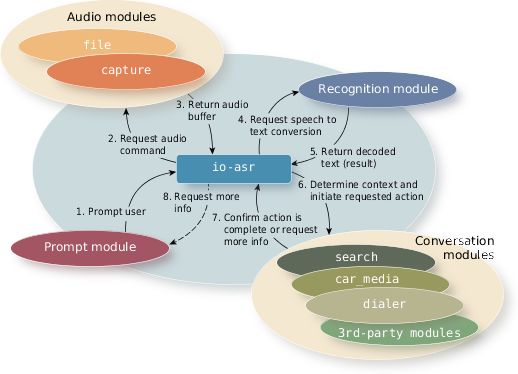ASR operates in a cyclical fashion, performing the same sequence of operations as often as required to complete the user's request. Each cycle of these operations is referred to as a recognition turn and is illustrated in the following diagram:

ASR's control flow works as follows:
- ASR is triggered by the prompt module, which monitors the system for events (a UI button press or a PPS update, for example) and then starts a recognition turn by prompting the user for a command.
- After the prompt is rendered, ASR passes control to the audio capture module to capture the user's spoken command. On a successful capture, control passes to the recognition module. If the command capture isn't successful, control passes back to the prompt module to retry.
- The recognition module converts the audio command to a text string and assigns the result a level of confidence to indicate how well the command was "understood" by the recognizer. Depending on the configuration, if the confidence level isn't high enough, ASR will prompt the user again.
- When a successful result is available, ASR passes control to the conversation modules. The conversation modules must first determine the context of the command (e.g., search, multimedia, or phone). The context determines which conversation module takes over to complete the command. When a context is determined, the associated conversation module is "exclusive." That is, it's the only conversation module that will handle results until this command is fulfilled. At this point, the exclusive module either completes the action or triggers another recognition turn to have the user prompted again for more information. This process continues until the action is completed. The conversation module then removes its exclusive status so that a fresh recognition turn can proceed.